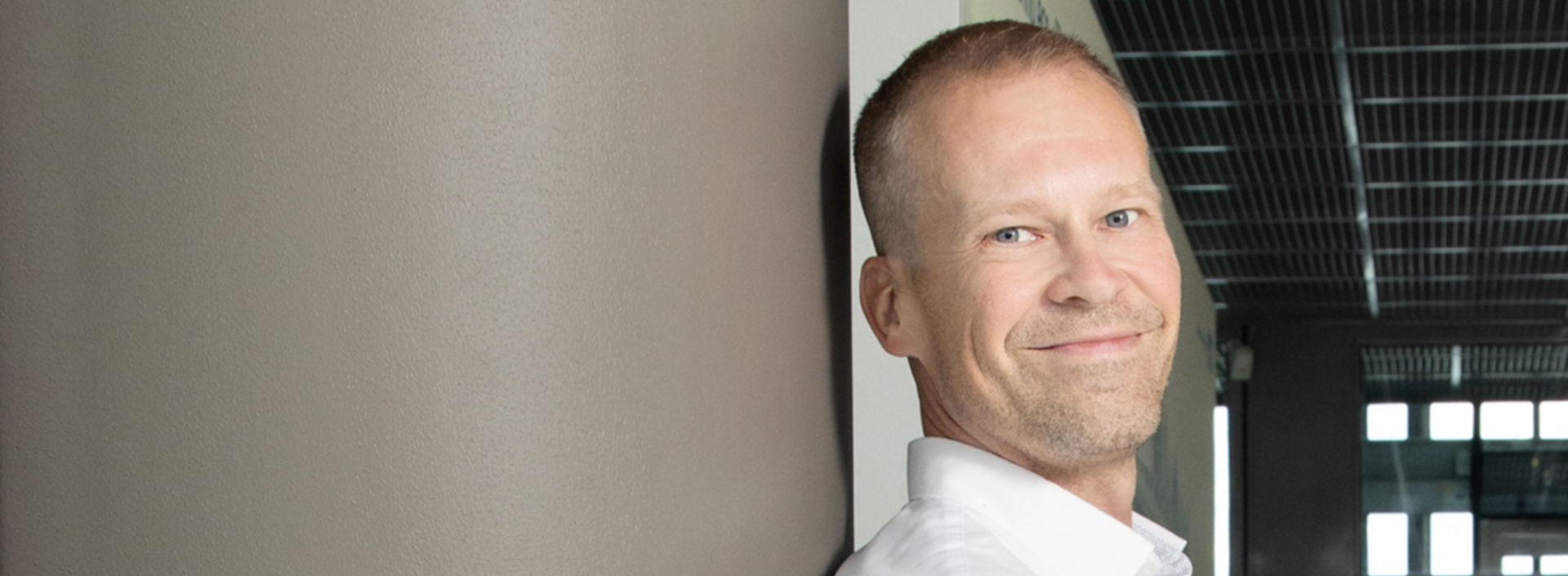If you stepped out of an elevator (naturally!) into KONE in 2035, what’s happening in R&D and innovation?
Fifteen or so years isn’t that long for cities or buildings, even if it is quite a long time for people. It’s not going to be a flying elevator we’re working on, or a teleport. But people will still need to move around inside buildings and through urban spaces in the 2030s, and the importance of sustainable solutions, accessibility and ease of use is only set to increase.
Almost all of the buildings that people are going to be using in 2035 have already been built, so this is the foundation we’ll be working on, even while people and their needs keep evolving. If you modernize the elevator of an existing building, you can reimagine the whole building, so a big question will be how we bring old buildings to the same level as new ones so that they can cater to people’s expectations in the 2030s.
Virtual and augmented realities will be more popular than today. While it's still likely to be a metal box that people will get into, it will be a faster ride, less waiting time and more intelligent. It knows where you’re going and it's taking you directly there, maybe giving you some helpful advice along the way. It’s probably connected to your smart wearable device – maybe not your smartphone anymore.

What are the latest technologies that are transforming the industry?
When we think about our R&D work, the role of software, data and AI will continue to grow. We can assume that the elevator will become more intelligent and that in future all elevators are 100% connected to the cloud. We can also expect that our own competences in those areas will increase significantly.
One important emerging technology is the use of a digital twin to design, test and validate elevators in virtual environments – not just of the car and shaft, but of the actual building and even block or district. This enables us to run simulations and ensure not just that the elevator is the right one for the building, but that it’s the best possible optimization of the flow of people and material in that specific environment.
We are also doing a lot of innovation around making elevators lighter and more energy efficient. We focus on sustainable use of materials in product design and production, and continuously find ways to extend product lifetime with maintenance and modernization. Sustainability is a key design principle in all our innovation. We have also invested significantly in construction and logistics. Whether it’s a new or existing building, the time it takes to get the new elevator installed, modernized or replaced has been significantly reduced.

Which recent solution are you most proud of?
The technology foundation we are working on is super exciting. It’s pushing our offering and competitiveness and represents another industry-leading step.
Of course, past innovations like the MonoSpace® DX, machine roomless lifts or UltraRope® have transformed the industry. It’s core innovations like this that are very exciting for our R&D team – they’re what drives the industry forward.
We’ve been leading innovation on the service and maintenance side too, with KONE 24/7 being the leading maintenance platform. We have a very strong road map for that and we’re confident that our leadership will continue.
A more recent solution I’m super proud of is the award winning KONE Lane gate, which is a stylish and space-efficient gate for high end office buildings. Combined with KONE Office Flow it will take people flow to the next level. Equally I am proud of KONE’s construction productivity solutions and new innovations in infrastructure, such as airports and metro stations.
These are just some examples of what KONE R&D can do when software, hardware, and applied research teams work hand-in-hand pushing ourselves to out-innovate and outpace the competition.

KONE’s ultimate goal is to improve the flow of urban life, what does this actually mean going forward?
In future, more people will live in cities and urban environments. And in spite of the continuing growth in virtual realities, home deliveries and remote working, people are still going to move – within their building, between buildings, and within their district and city. People are going to order more products and services directly to their homes, so there will be more packages, and more drones and robots delivering them. This is part of the urban flow that we want to have a role in.
It’s common to talk about “people flow”, but ensuring the smooth movement of materials, packages, construction logistics and so forth is becoming ever-more important. So, in that sense, the idea of urban flow, I like it better.
I envision KONE playing a leading role in smoothing the millions of micro journeys that people, vehicles, material, packages, and robots make in cities every day. It's not only about where the journeys start and end, but also how they intersect and interact. It requires not only looking at how people are moving up and down within a building, but also expanding and partnering up with other companies, cities, urban planners. We want to contribute to safer, more effective urban flow, so we’re making cities better places to work and live.

What underlying technologies do you see as key to enabling smooth urban flow in the next decade?
The underlying enablers are the typical Internet of Things stack – the technology behind the growing array of connected devices that are all around us. It's the sensors in the buildings generating data about what’s happening with the equipment and people. It's also mobile connectivity that provides this data from site to cloud, and it's data analysis in the cloud to generate actions and insights.
We already generate vast amounts of data, and we can generate a whole lot more. The question is how to extract more customer and business value out of this data. We've already harnessed machine learning to some extent, but the rapid evolution of AI will accelerate the innovation cycle times.
The other foreseeable paradigm shift has to do with user interfaces, which will also be quite different. Today it’s all about smartphones, and I don’t think these handheld devices will vanish that quickly. But they will be complemented with goggles or holographic displays, or image projections. Equally the work of technicians on site will be supported and powered by goggles or robots, with AI advice keeping them safe, guiding them in the work.

You have R&D operations in 11 countries. How does this geographical diversity impact on R&D?
In R&D alone, we have over 1,300 people, plus hundreds of contractors and other partners. Our R&D operates at two levels: global and local. We have this global platform, where we are leveraging for scale, in terms of development efficiency and cost efficiency. But then we have the local side which tailors or customizes global offerings, not only when it comes to customer needs, but also in terms of market regulation and optimizing the supply chain.
We’re in a heavily regulated industry, and we need to be able to customize our offerings as rules and needs differ between countries. But we need to be smart about how to do it in a modular fashion on top of the common core platform, otherwise fragmentation and technical debt will kill productivity.
This kind of “glocal” approach means we draw innovation and market understanding from having many different nationalities and cultures on our team. That’s very important, and we’re very proud of this. We need to have people who are passionate and excited about the vision and who don’t shy away from asking questions and having big, hairy audacious goals.
This also feeds into how we develop our people, how we attract talent more broadly and how we can work with the best partners out there. For example, we are strategic partners with Amazon Web Services (AWS). At their recent annual event in Las Vegas, Kone was highlighted several times as an industry leader leveraging the latest technologies in driving different types of innovations, such as Generative AI and digital twinning. This reflects the scale of the projects we are involved in!
KONE’s R&D around the world
KONE operates seven global R&D centers across Asia, the Americas and Europe, with each hub located close to production and testing facilities, staffed by teams of world-class professionals.
- Finland: The Hyvinkää testing laboratory is KONE’s largest R&D site, with over 1,000 staff. The nearby Tytyri limestone mine is home to one of KONE’s high-rise elevator testing laboratories, incorporating one of the world’s longest test shafts, 350 meters below ground.
- USA: KONE’s 16,000 sq m facility in Allen, Texas features a 40-meter tall test tower with six elevator shafts.
- China: Kunshan Park, an area of 240,000 sqm, is KONE’s largest production and R&D base.
- India: KTI (KONE Technology & Innovation) India has a newly expanded technology center in Chennai, including a state-of-the-art test tower which opened in 2023, and another new location in Pune.
- Our R&D sites Pero in Italy and Torreón in Mexico strengthen our abilities to develop and manufacture solutions that meet the needs of our customers in local markets.

